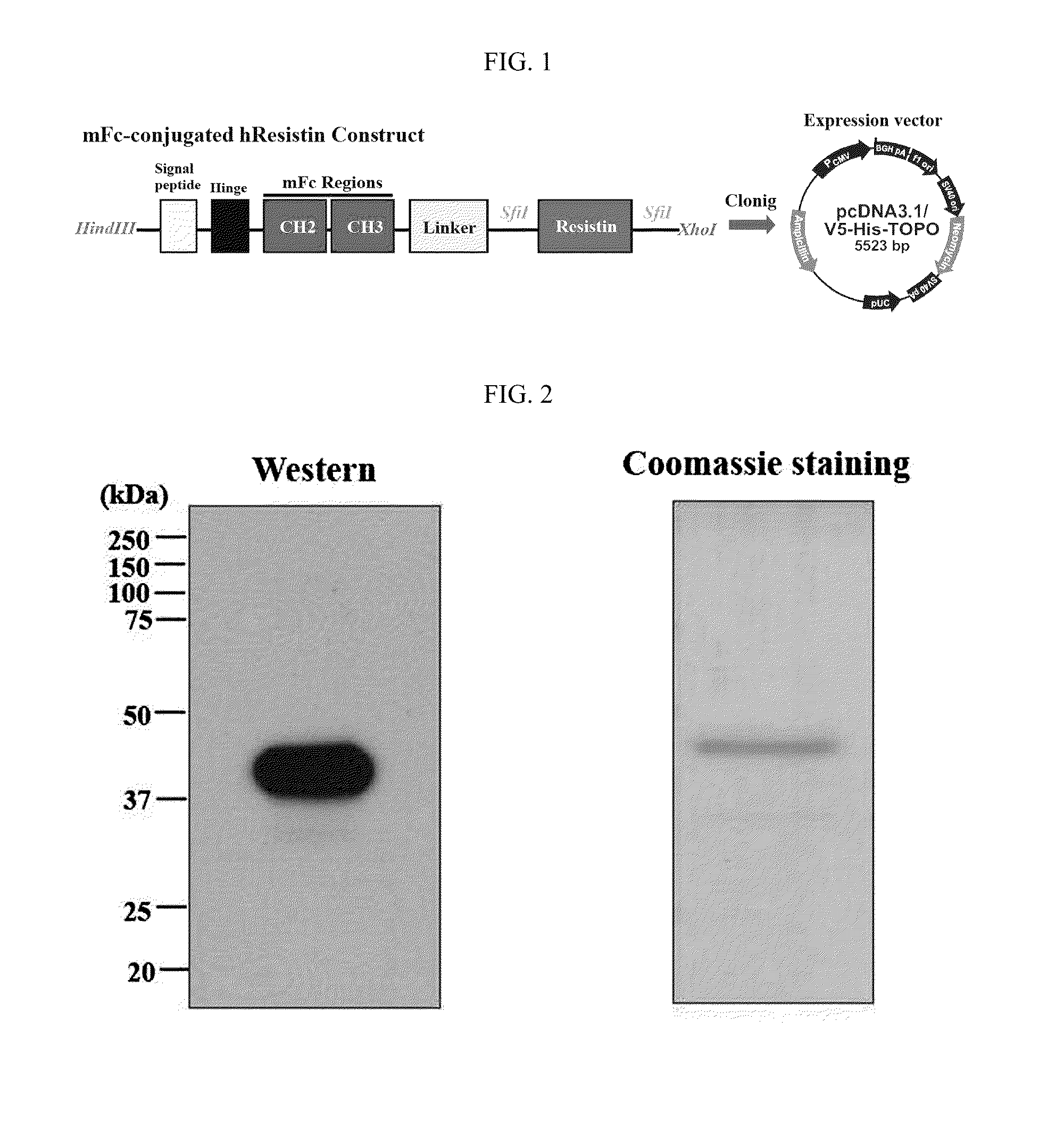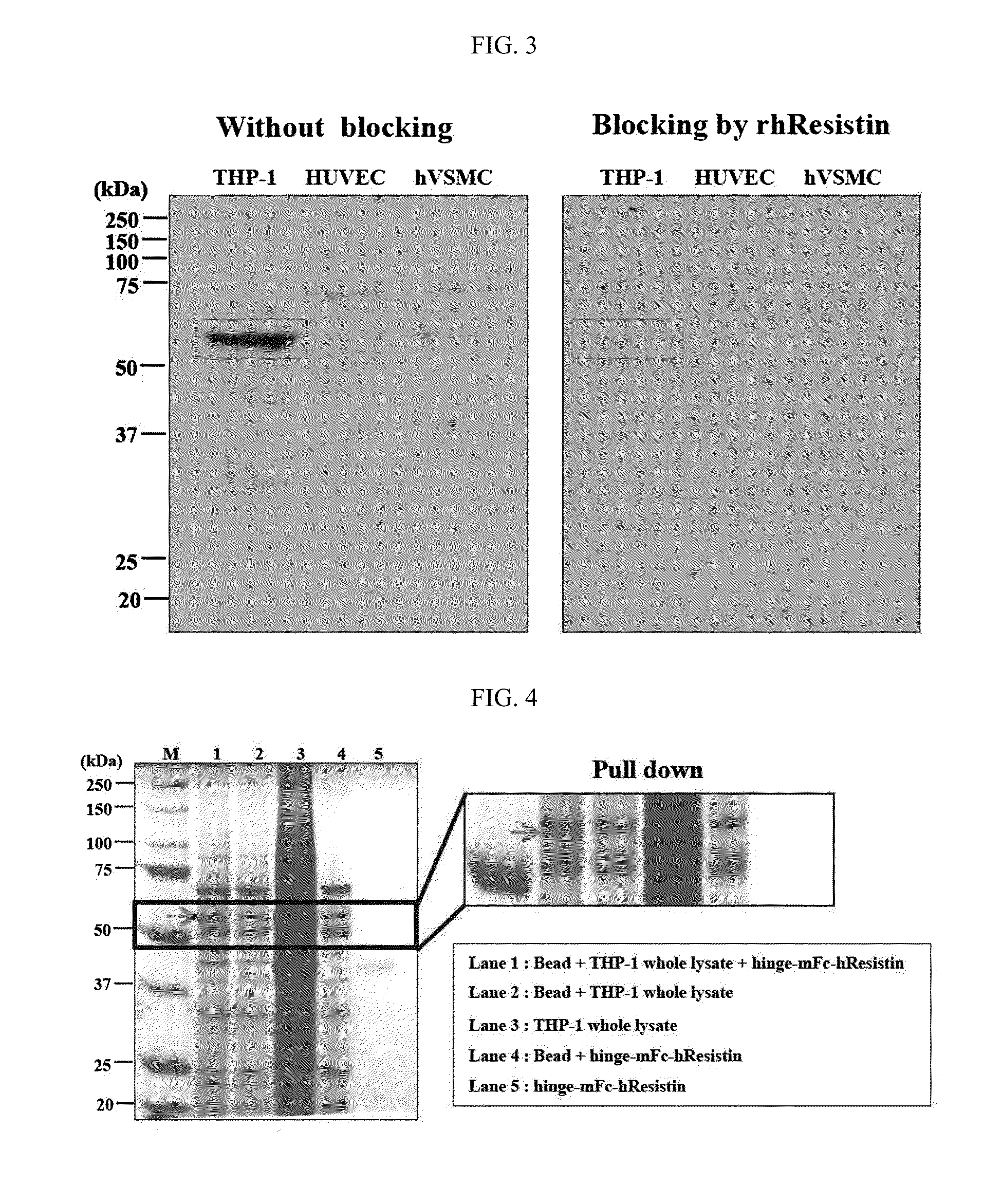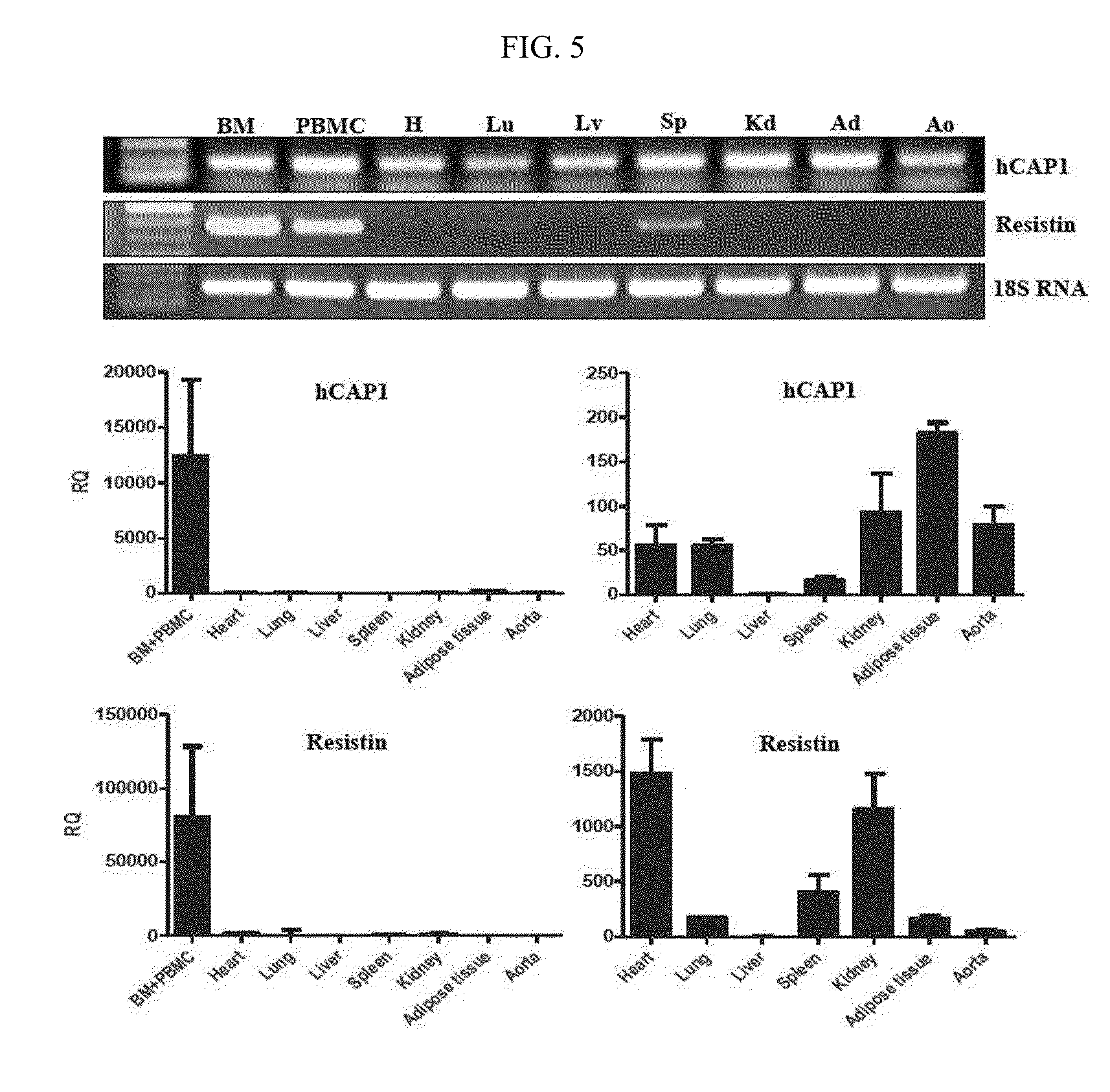Human resistin receptor and use thereof
a technology of resistin and receptor, which is applied in the field of human resistin receptor, can solve the problems of not being able to fully understand the receptor and not being able to confirm the close relationship of the receptor to the resistin
- Summary
- Abstract
- Description
- Claims
- Application Information
AI Technical Summary
Benefits of technology
Problems solved by technology
Method used
Image
Examples
example 1
Preparation of mFc-Human Resistin Recombinant DNA
[0092]In order to confirm a complex of resistin and a resistin receptor, a recombinant DNA which encodes mFc-conjugated human resistin protein was initially prepared.
[0093]A structure of recombinant DNA which encodes mFc and human resistin fusion protein and an expression vector were shown in FIG. 1.
[0094]In particular, in order to prepare the recombinant DNA which encodes mFc-conjugated human resistin protein shown in FIG. 1, firstly, PCR primer including HindIII and XhoI sequences (forward primer: sequence number 1. 5′-CCCAAGCTTATGGAGACAGACACACTCCTGCTATGGGTACTGCTGCTCTGGGTTC CAGGTTCCACTGGTGACGAGCCCAAATCTAGCGACAA-3′, reverse primer: sequence number 2. 5′-CGAGCCACCGCCACCCGAGCCACCGCCACCCGAGCCACCGCCACCTTTACCAGG GAGTGGGAGA-3′), and Taq polymerase were used to conduct polymerase chain reaction (PCR) to prepare the mFc-conjugated human resistin recombinant DNA.
[0095]The recombinant DNA proliferated by the PCR was cut with a restriction enzy...
example 2
Expression of mFc-Human Resistin Protein
[0096]In order to confirm a good expression of mFc human resistin recombinant protein in the recombinant DNA cloned in the expression vector pcDNA3.1 according to example 1, the recombinant DNA was transfected to HEK293-F cells using polyethyleneimine (PEI).
[0097]In particular, cells were seeded in a cell culture dish so that a cell density of the HEK293-F cells to become 70 to 80% at one day before the transfection. At a following day, the mFc human resistin recombinant DNA which was cloned in the expression vector which is pcDNA3.1 and the transfection inducing material, PEI, were mixed and introduced in the HEK293-F cells. After a certain time of cell cultivation, only cell culture medium was separated and concentrated. The concentrated cell culture medium was passed through the column in which beads specific to mFc (CaptureSelect Multi Species affinity matrix) are filled, and only mFc human resistin recombinant protein specifically binding...
example 3
Confirmation of Resistin Receptor
[0100]In order to find a receptor protein which binds to mFc human resistin recombinant protein, THP-1, HUVEC, and human ascular smooth muscle cells (VSMCs) were cultivated and classified by applying fluorescence-activated cell sorting (FACS). A protein was extracted from the cells, and western blot was performed by using the purified mFc human resistin recombinant protein as a primary antibody.
[0101]In particular, all proteins were extracted from THP-1, HUVEC, and human VSMC cell, and then, protein electrophoresis (SDS-PAGE; Sodium Dodecyl Sulfate Polyacrylamide gel electrophoresis) was performing with 8% separating acrylamid gel. The proteins separated by the protein electrophoresis were transferred to polyvinylidene fluoride (PVDF) membrane, and then, reacted together with PVDF membrane by using mFc human resistin recombinant protein as a primary antibody.
[0102]Subsequently, among the above three cell proteins, the protein which binds to mFc human...
PUM
| Property | Measurement | Unit |
|---|---|---|
| Atomic weight | aaaaa | aaaaa |
| Size | aaaaa | aaaaa |
| Strain point | aaaaa | aaaaa |
Abstract
Description
Claims
Application Information
 Login to View More
Login to View More - R&D
- Intellectual Property
- Life Sciences
- Materials
- Tech Scout
- Unparalleled Data Quality
- Higher Quality Content
- 60% Fewer Hallucinations
Browse by: Latest US Patents, China's latest patents, Technical Efficacy Thesaurus, Application Domain, Technology Topic, Popular Technical Reports.
© 2025 PatSnap. All rights reserved.Legal|Privacy policy|Modern Slavery Act Transparency Statement|Sitemap|About US| Contact US: help@patsnap.com



